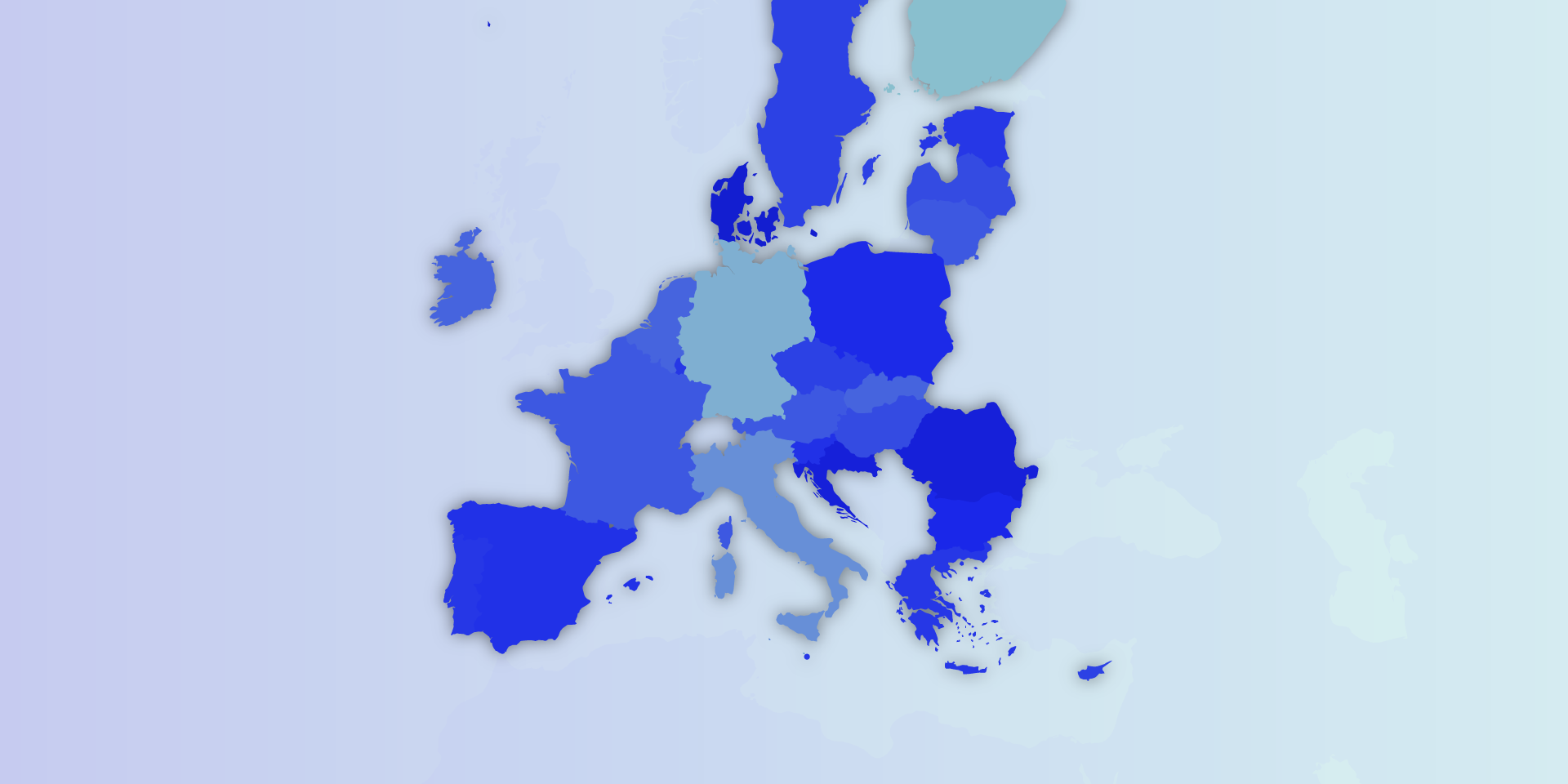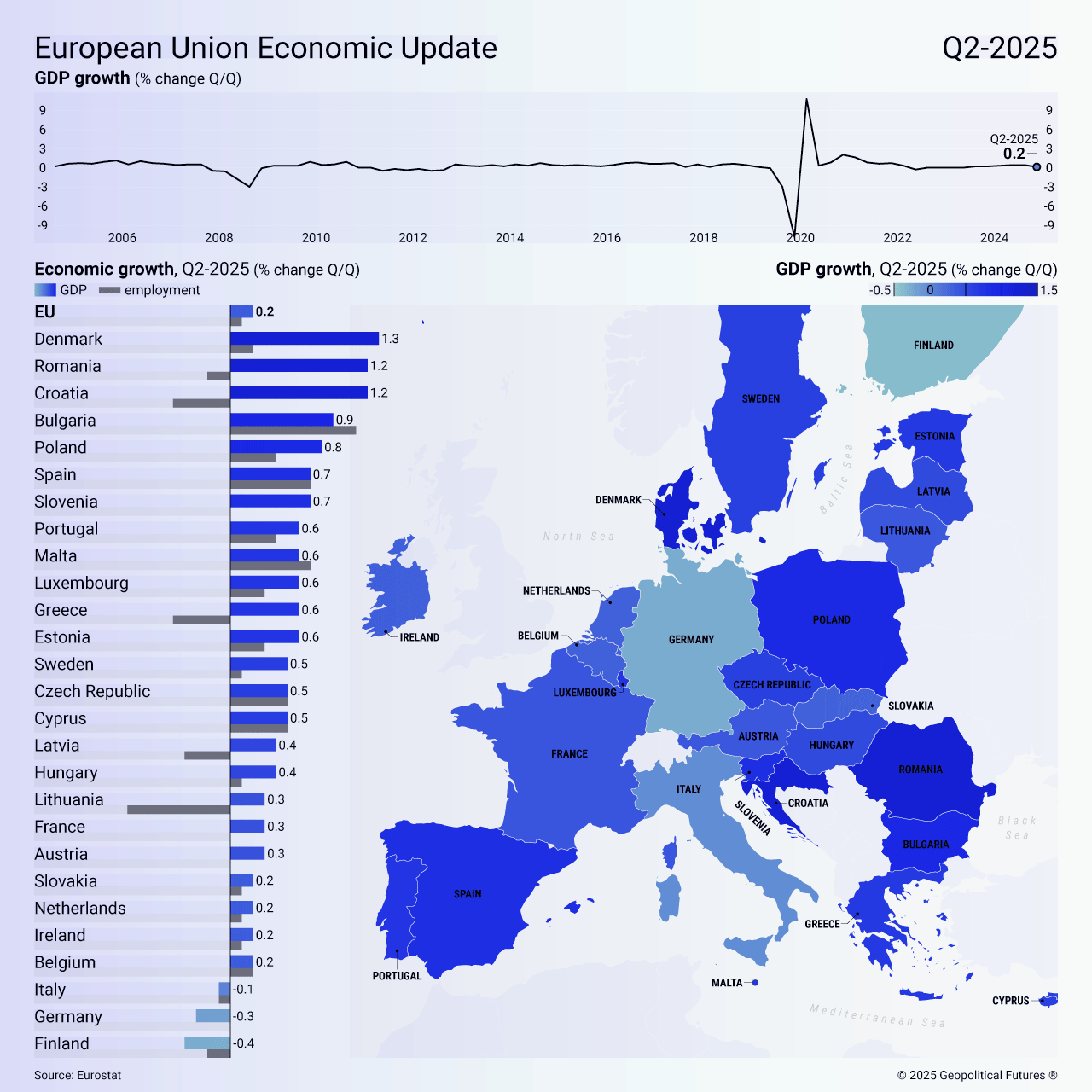Open as PDF
Eurostat has revised upward its estimate of eurozone economic growth for the second quarter of 2025. Growth remained modest, driven by rising consumer spending in both the eurozone and the EU as a whole, as well as higher government spending. Among EU member states, the highest gross domestic product growth rates were recorded in Denmark, Romania, Croatia and Poland, supported by a variety of instruments, from industrial growth to investments from EU funds.
However, despite the improved sentiment, the stabilization and slight growth may not last. The main risk to the European economy remains the threat of a slowdown in internal economic activity, and much will depend on demand and the extent to which EU funds are used. Germany’s slowdown amid weak external demand is a major factor in slower overall growth.
Another challenge will be the impact of U.S. tariffs, particularly on pharmaceuticals and trucks, which will affect major manufacturers. For example, Denmark led the EU in growth in the second quarter, but its central bank recently lowered its GDP forecasts for 2025-27, citing the negative effect of U.S. tariffs.

